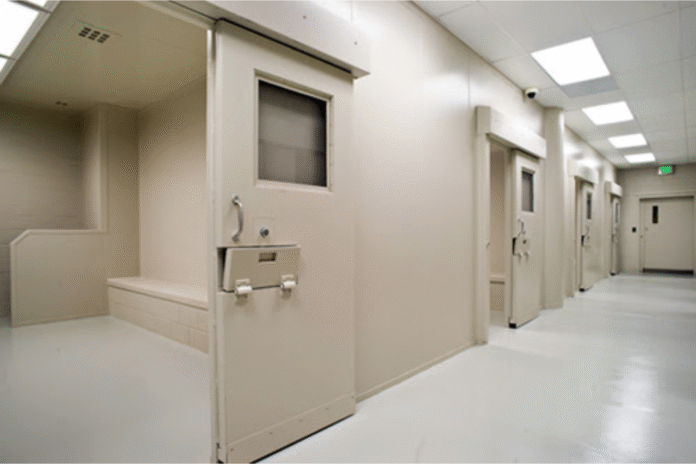Doors might not seem like something worth getting excited over, but in detention facilities, they’re more than just entryways—they’re vital security components. Advanced designs in detention center doors quietly transform these spaces, making them safer for both staff and inmates. Here’s a look at surprising innovations shaping modern corrections environments.
Anti-Ligature Door Designs for Increased Safety
Safety inside detention facilities means preventing harm before it can happen. One innovative approach detention equipment contractors now incorporate is anti-ligature door designs. These doors feature rounded edges, concealed hardware, and specially designed handles that reduce opportunities for self-harm. Such features are subtle yet make a big difference in creating a safer environment, especially in modular jails, where maintaining inmate safety can become complicated quickly.
Beyond merely looking smooth and safe, these anti-ligature doors help security detention equipment contractors ensure compliance with stringent safety standards. Facilities benefit from reduced risks of self-injury or suicide attempts, making management less stressful for staff. More importantly, the thoughtful designs offer peace of mind, fostering a calmer atmosphere overall.
Quiet-Operation Mechanisms Enhancing Facility Security
Noisy doors in detention centers can unintentionally announce movements or disturbances. To combat this issue, detention center doors now incorporate quiet-operation mechanisms. These advanced door systems minimize sound from locks, hinges, and closing mechanisms, allowing security personnel to maintain discreet control of facility movements without drawing unwanted attention. Quiet doors offer strategic advantages during tense situations, where silence helps preserve control and safety.
Additionally, the implementation of noise-reducing doors helps foster a more stable and less stressful environment for both staff and inmates. Constant loud banging and locking noises increase anxiety, making quiet-operation mechanisms a welcome innovation in modern modular jails. The silent efficiency provided by these doors significantly improves daily operations, a benefit detention equipment contractors now prioritize in their designs.
Transparent Security Panels with High-Impact Resistance
Transparent panels have emerged as a smart innovation for detention center doors, providing increased visibility without sacrificing safety. Built from materials like polycarbonate, these transparent panels resist heavy impacts and attempts at forced entry or vandalism. This transparency allows staff to observe inmates and detect potential issues quickly, maintaining better overall facility security without relying exclusively on cameras or frequent staff patrols.
Apart from security, transparent high-impact panels also help create an environment that feels less confined, lowering stress and tension levels. Clear sightlines allow inmates to feel less isolated, improving interactions and reducing aggressive behaviors. Such thoughtful integration into detention center doors demonstrates how carefully selected materials by detention equipment contractors can positively impact facility atmosphere and security.
Remote-Controlled Locking Systems for Staff Efficiency
Advancements in technology have significantly improved locking systems in detention facilities. Remote-controlled locking mechanisms have transformed how detention center doors are managed, allowing security personnel to control multiple doors simultaneously from centralized locations. This technology drastically reduces response times during emergencies, providing greater efficiency and control for facility operations.
With remote systems, staff no longer need to physically move between doors, improving reaction times during critical incidents. Detention equipment contractors now frequently offer remote-controlled systems, recognizing their ability to enhance safety through quicker lockdown capabilities. By streamlining access management, these innovations support security detention equipment contractors in designing highly efficient and secure modular jails.
Tamper-Proof Door Hinges Built for Durability
Door hinges might seem ordinary, but tamper-proof hinges are anything but simple. Specifically engineered for detention facilities, these hinges resist damage from inmates who attempt tampering or forced entry. Reinforced with hidden hardware and robust materials, these hinges withstand severe stress and vandalism attempts, ensuring doors remain secure even under intense pressure.
Durability is vital in detention environments, and tamper-proof hinges contribute directly to door longevity, saving maintenance costs and time. Security detention equipment contractors appreciate these hinges for their straightforward reliability, as they ensure doors remain operational longer, reducing downtime. Investing in durable hinges ultimately ensures detention center doors meet the demanding needs of high-security facilities.
Easy-to-Repair Modular Door Assemblies
When a door fails, quick repairs are essential. Modular door assemblies address this issue by providing easily replaceable components. Detention equipment contractors design these assemblies so facilities can replace damaged sections individually, reducing downtime significantly. Instead of removing and replacing an entire door, modular designs allow targeted repairs, maintaining facility operations without extended disruptions.
These assemblies not only simplify maintenance tasks but also save on long-term operational costs. Modular jails particularly benefit from this system because downtime can be especially disruptive in modular structures. Facility managers appreciate modular door designs as practical solutions that streamline operations and maintenance schedules, keeping detention centers functioning smoothly.
Fire-Resistant Materials Integrated into Detention Door Construction
Fire safety remains a top priority in detention centers, making fire-resistant materials crucial for modern detention doors. Detention equipment contractors increasingly incorporate fire-resistant metals, insulated cores, and protective seals into door designs. These materials significantly delay fire spread, protecting inmates, staff, and property during emergencies.
Incorporating fire resistance into detention center doors also helps facilities comply with strict fire safety regulations, avoiding costly fines and penalties. The presence of reliable fire-rated doors gives staff critical extra time during evacuations or emergency responses. Such proactive safety measures highlight the thoughtful innovations continually reshaping detention equipment standards, emphasizing both practicality and protection.

